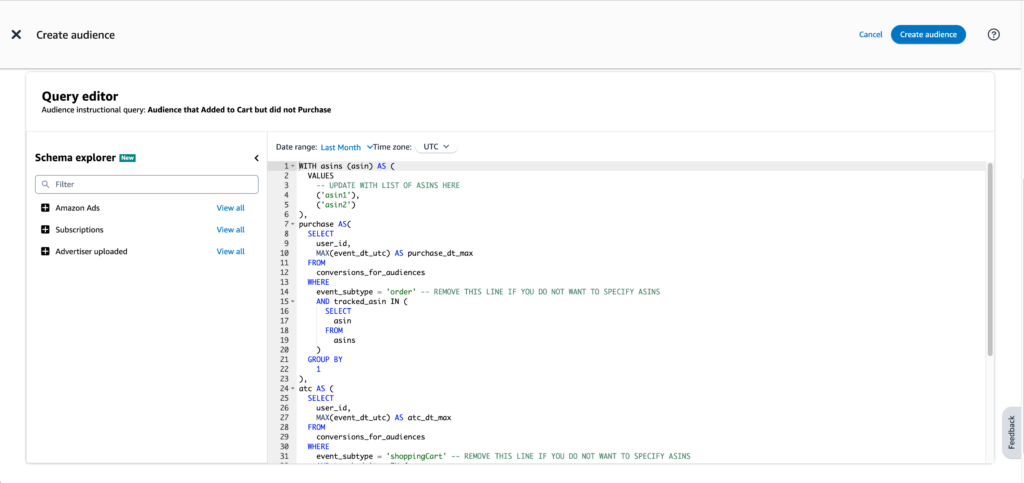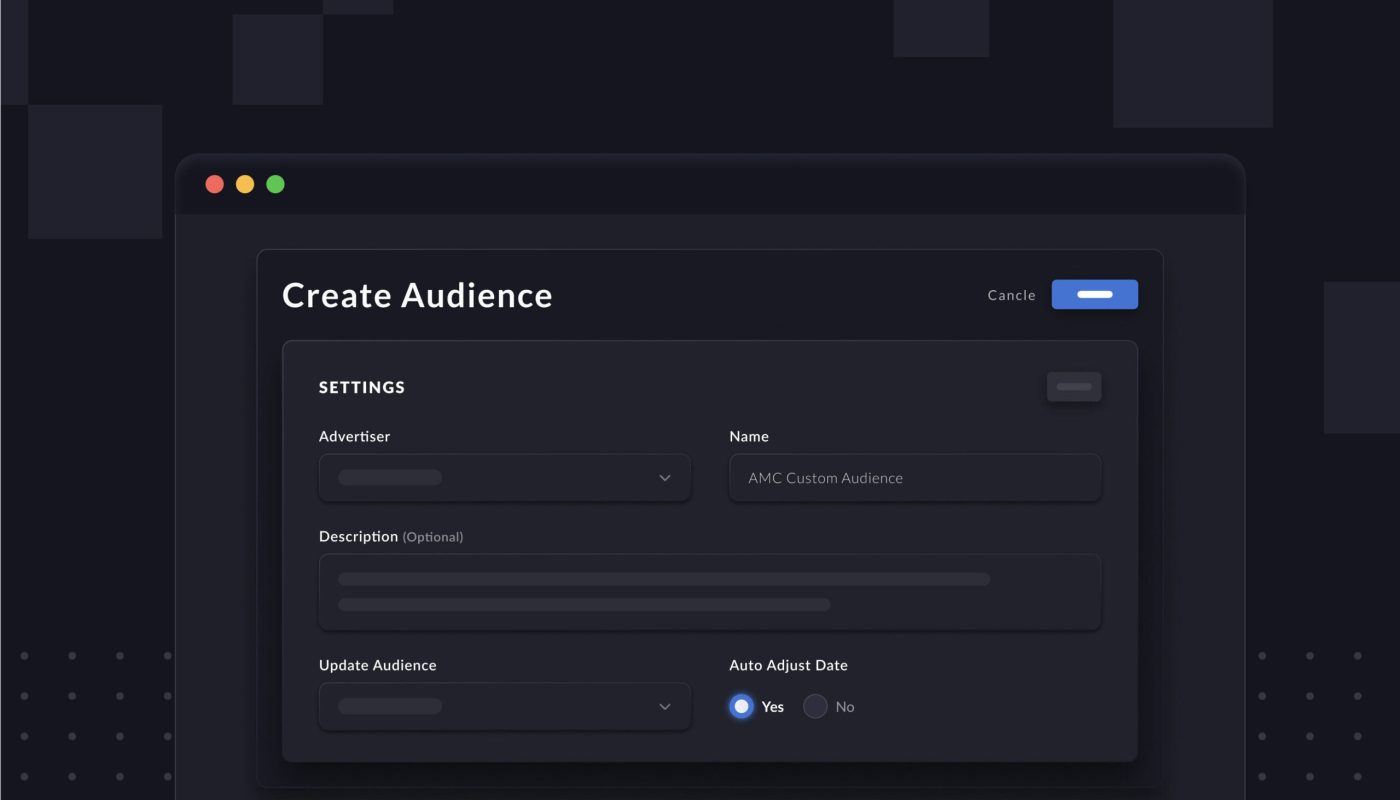I was really excited to read this news last week: You can now create custom audiences in Amazon Marketing Cloud.
I have been a fan of Amazon Marketing Cloud (AMC) since its launch. I’m impressed with the level of granular analysis it offers and the metrics—like New-to-Brand—that it makes easy to analyze.
Now, the Custom Audiences tool, I think, is only going to make AMC more essential for brands and agencies.
As Amazon itself noted in its blog post, you can use AMC Custom Audiences to create all kinds of groups of shoppers to target with DSP ads. For instance, you might group people based on:
- Keywords: One possible audience is people who searched for certain keywords after viewing one of your ads.
- Activity: A great custom audience: People who bought from you six months ago but haven’t engaged with your brand since.
- LTV: Shoppers with high lifetime-value (LTV) might be another meaningful custom audience.
You can then use these audiences in two overarching ways:
- Analysis: Compare custom audiences to figure out which of your ad strategies is working best.
- Targeting: Export any custom audience you build in AMC to Amazon DSP, where you can run ads that specifically reach that audience.
Another benefit: In AMC, you can set your custom audiences to auto-refresh. In other words, whenever a new shopper matches the parameters of that audience, they will be automatically added to the mix.
So what can you do with Custom Audiences?
The possibilities of AMC Custom Audiences are pretty much limitless.
Keep in mind, any AMC query result can be turned into an audience. And because AMC can answer virtually any burning question you have about your business, there’s no ceiling to what you can do.
Here are a few examples of how you might use AMC’s Custom Audiences. But remember, it is only a tiny snapshot of the possibilities.
Pick the right cross-sell. Custom audiences in AMC can help you map out which products to sell to your shoppers next.
For instance, let’s say you know that people who buy Product A and then Product B are very likely to also buy Product C. You can build a custom audience of shoppers who bought A and then B.
You can push that audience out to Amazon DSP, and send them ads for Product C.
How is this different from the custom audiences feature that already exists in DSP? DSP only lets you select the people who bought both products at some point, but it doesn’t care about the order in which those purchases were made.
By contrast, AMC lets you create custom audiences that bought Product A, then Product B, in that order.
Bring shoppers along the optimal path to purchase. You can use the same logic as the cross-sell, and apply it to ad views or clicks.
Maybe you create an audience of shoppers who saw Ad X, followed by Ad Y. Say you know this group’s conversion rate is highest when they next see Ad Z. To maximize conversions, all you have to do is take that audience of “X then Y” shoppers, and serve them Ad Z.
Reach people based on exposure alone. With AMC, you can now build custom audiences of people who’ve merely been exposed to a specific ad or set of ads. That’s significant, because previously, you would need shoppers to at least engage with your ad or product page in order to incorporate them into the audience.
This change opens a lot more potential paths to create, study, and re-target audiences.

(A very basic example of an audience—”Audience that Added to Cart but did not Purchase”—that you can create in AMC)
Make your own custom audience
With AMC, you can create pretty much any audience you can imagine.
For instance, the Intentwise AMC solution has dozens of built-in queries that let you measure everything from New-To-Brand customers to multi-touch attribution to Time to Conversion.
All of these queries can become audiences. Maybe you want to run an ad campaign targeting first-time buyers from your brand. Or maybe you want to target people who took a long time to make their purchase from you. The possibilities are vast.








